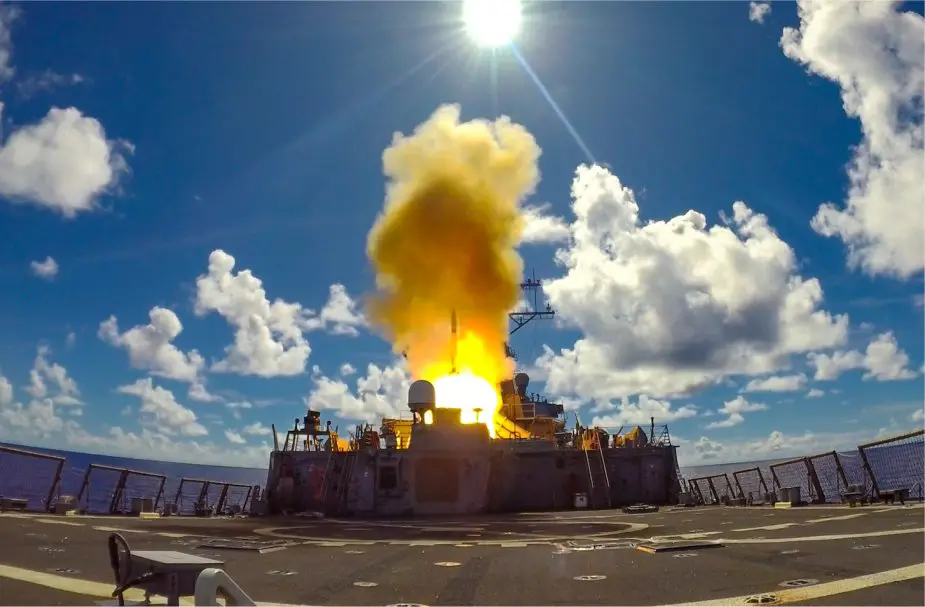Breaking news
US Navy's next gen subsonic aerial target reaches new milestone.
According to information published by the US DoD on September 1, 2022, the U.S. Navy’s next-generation subsonic aerial target (SSAT), the BQM-177A, reached full operational capability during a successful standard missile launch and intercept while participating in Pacific Vanguard 2022 (PV 22) in the Philippine Sea.
Follow Navy Recognition on Google News at this link
 The Arleigh Burke-class destroyer USS Barry launches a Standard Missile 2 during a live-fire missile exercise as part of Pacific Vanguard 22 while operating in the Philippine Sea. (Picture source: US DoD)
The Arleigh Burke-class destroyer USS Barry launches a Standard Missile 2 during a live-fire missile exercise as part of Pacific Vanguard 22 while operating in the Philippine Sea. (Picture source: US DoD)
The target drones were launched from the Lewis and Clark-class dry cargo ship USNS Alan Shepard (T-AKE 3) and engaged with missiles launched from Arleigh Burke-class guided-missile destroyer USS Barry (DDG 52) and Royal Australian Navy Anzac-class frigate HMAS Perth (FFH 157), marking the first time the BQM-177A has been used in the Western Pacific region and highlighting the drones achieving full operational capability.
The BQM-177A is an advanced high-subsonic, recoverable aerial target system that imitates advanced subsonic anti-ship cruise missile threats to test the effectiveness of shipboard air defense systems and is used for fleet training.
Capable of speeds in excess of 0.95 Mach and a sea-skimming altitude as low as 6.6 feet, the BQM-177A has no equal when it comes to delivering realistic anti-ship missile threat emulation.
This versatile aerial target supports a variety of mission requirements by carrying a wide array of internal and external payloads. These include proximity scoring, Identification Friend or Foe (IFF), passive and active RF augmentation, electronic counter-measures, infrared (IR) augmentation (plume pods), chaff and flare dispensers, and towed targets.
PV 22-1 is the fifth iteration of the quadrilateral exercise series between Australia, Japan, Republic of Korea, and U.S. Naval forces. The purpose is for the participating navies to continue to refine their skills operating as an integrated force ready to respond to a changing and complex maritime environment in the Indo-Pacific region.




























